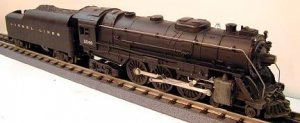It sounds like you've been reading about the Broadway Limited 4-6-4 NYC Hudson. It's available in several versions.
Block and Roman are different types of lettering 'fonts', I believe NYC used Roman then later in the steam era switched to Block.
On some of it's lines, the NY Central used "track pans", long troughs between the rails filled with water that an engine could scoop up via a water scoop under the tender instead of stopping at a water tank. The engineer could raise and lower the scoop from the cab of the steam engine. Only NYC engines that served those lines that had track pans would have scoops.
FWH is "feed water heater", steam engines turned water to steam better if the water was heated first, Elesco was one of the companies that made them. For model purposes it's just sort of a small detail part, it wouldn't change the basic appearance of the locomotive. Striping is just that - some NYC steamers used white striping on some parts of the engine, some engines didn't. Depends on which you want to model.
5344 was the most famous New York Central 4-6-4, it was the one that Lionel used for the first mass-produced model locomotive (O scale) in the US back in the 1930's. I think BLI offers their Hudson in several different numbers (in case you want more than one !!)
Generally re HO locomotives, "undecorated" means raw plastic - no paint or lettering etc. so you can decorate it yourself for your favorite railroad or a freelance road you've made up. Sometimes engines are offered "painted - undecorated" which means it's been factory painted (often just all black for a steam engine, sometimes it will have the smokebox & firebox painted gray) then you can use your own decals to letter it yourself.
As for the James Whitcomb Riley and it's 4-6-2 Pacific's, the closest you could come (except for brass??) might be a Bowser NYC K-11....
http://www.bowser-trains.com/holoco_k11.php




